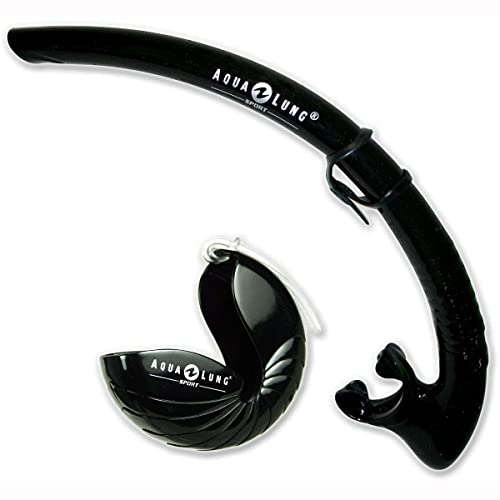Since there are so many snorkels on the market, it can be hard to narrow down the options on the market and find the best freediving snorkel. Thankfully, for freedivers and spear fishermen, a snorkel with a simple design is the best snorkel.
With how popular water activities like snorkeling, diving, and spearfishing have gotten in the past decades, many strides have been made in snorkel technology. Nowadays, even entry level snorkels are a technological marvel compared to the hollow reed tubes our predecessors used to use.
You can get snorkels with dry tops and purge valves that keep water from entering the tube, as if it were protected by a magic water repelling barrier. As nice as these features are, they are actually detrimental to freedivers.
For us freedivers, there is only one type of snorkel we need. And that is the classic J-type snorkel sans dry-top or purge valve. The features we are looking for are a comfortable mouthpiece and some extras that might not be found on most snorkels.
Even though a traditional snorkel seems somewhat lacking in features, it actually has everything you need and none of the fluff. That means shopping for them will be a breeze, and you will save lots of money. Let’s go over what to look for in a freediving snorkel so that you can find the best one for you.
Our Top Picks:
Best Freediving Snorkels Review
Cressi Corsica
- The Corsica is the ideal snorkel for freediving, spearfishing and scuba diving. Very light and comfortable.
- Large diameter snorkel tube provides unobstructed ease of breathing.
- Soft bendable snorkel tube to maintain proper and comfortable positioning.
The Cressi Corsica was designed specifically for spearfishing and freediving and it shows. With its soft and flexible large diameter tubing, you can adjust it into a comfortable position behind your head while maintaining consistent airflow on the surface.
When underwater, the mouthpiece will stay out of your way by resting gently beneath the chin for improved hydrodynamics. Comfort is once again a priority which is why the silicone mouthpiece is designed to be hypoallergenic and to fit ergonomically into one’s mouth. Thanks to its anatomical shape, the mouthpiece won’t dig into your gums or teeth even during long sessions in the water.
Pros:
- Flexible snorkel tube allows for easy storage as well as comfortable positioning while underwater.
- Large diameter snorkel tube and specially designed u-bend allows for easy and unobstructed breathing and clearing.
- Soft and anatomical silicone mouthpiece is hypoallergenic and remains comfortable even during longer diving sessions.
- Can easily fit into a BCD pocket thanks to the ultra bendable tube.
- No closures or vents that may fail or hold air.
Cons:
- The mask clip is low quality and can easily break. Replace it or you may end up losing the snorkel.
OMER Sub Zoom Pro Soft Snorkel
The OMER Zoom Pro features an ergonomically designed air tube and mouthpiece made with hypoallergenic silicone. It naturally curves around the face and will not get in the way underwater. Fill your lungs with fresh oxygen thanks to the large internal tube that is 20mm in diameter, a dimension that optimizes the air flow rate.
In order to keep drag as low as possible, many components were kept to a minimum in size, such as the strap holder. The snorkel tube of the Zoom Pro is constructed from flexible plastic material that, despite being soft, has high mechanical strength. The material is often used in underwater devices subject to wear and tear, as well as heavy-duty engineering components so you know it is built to last.
Furthermore, the OMER Zoom Pro won’t discolor under UV light radiation, nor will it swell up in the water. This is due to its high rebound elasticity so divers can fold it up when not in use and it will simply snap back into shape once it is needed. The material is not so rigid that it vibrates during the ascent.
Pros:
- Ergonomic design built to adhere to the profile of a diver’s face.
- Mouthpiece made with hypoallergenic silicone, and the tube from Thermoplastic Urethane (TPU), a flexible and durable plastic material.
- The snorkel tube is foldable for travel and has an internal diameter of 20mm for optimized air flow rate.
- Dimensions of components kept as small as possible to still be functional and yet minimizes drag.
- Will not swell up in the water or discolor when exposed to UV rays.
Cons:
- The mouthpiece runs a little small, you may feel some discomfort using it for more than an hour.
Aqua Lung Sport Nautilus Roll Up Snorkel
- Rolls up; compact design
- Fits in a BC pocket or can be attached to a BC
- All silicone design for flexibility and durability
You will be amazed at how much space you can save when traveling with the Aqua Lung Sport Nautilus roll-up snorkel. Seriously, this thing can roll up to the size of your fist, allowing it to be easily transported within its holder or kept in a BCD or clipped to a D-ring when diving.
With how soft the silicone material is, you know that this snorkel is comfortable and extremely flexible. Despite how bendable the snorkel is, during strong currents you’d think it would flop around but it holds straight with no issues.
The Aqua Lung also comes with a useful, adjustable button clip that securely attaches the snorkel to the mask. This makes detaching it from the mask a breeze without ripping the band off the mask (which is what many other models do) and ruining your fit.
Pros:
- Compact design, capable of rolling up to fit in a BCD pocket or save on bag space when travelling.
- Silicone design is durable, yet flexible to allow it to roll up. Don’t worry, it will stay straight and functional during strong currents.
- Comfortable mouthpiece.
- Adjustable button clip that connects to the mask and allows for quick detachments without ruining your fit.
Cons:
- Some users have complained that this snorkel is too floppy, while most reviews agree that it holds strong. Your mileage may vary.
Mares Dual Snorkel
- Optimized diameter and length to prevent air turbulence caused by emptying
- Constructed from bi-materials with different textures to prevent irritation on the nape of the neck as well as providing flexibility without...
- Hydrodynamic design reduces vibrations and noise during underwater movements
The Mares Dual Snorkel is perfect for freediving and spearfishing because of how it is angled to stay out of your way and help you be comfortable underwater. It is constructed with bi-materials with differing textures which keeps it from irritating the nape of your neck while also ensuring flexibility during use.
Next, this snorkel is built to be hydrodynamic, vibration-resistant and quiet, as well as flexible without causing any interruptions to the airflow. Perfect for spearfishing when you want to be able to sneak up on fishes.
The mouthpiece is made from hypoallergenic silicone and is designed to offer clear and easy breathing and is suitable for prolonged use without feeling uncomfortable. The Mares Dual Snorkel has an overall very simple design that does exactly what you need it to do and it does it very well.
Pros:
- Anatomical design contours around your face and stays out of your way.
- Optimized tube length and diameter to reduce air turbulence that occurs when emptying.
- Hydrodynamic design makes almost no noises that can alert fish to your presence.
- Low profile, low drag, flexible where it needs to be and otherwise very solid.
Cons:
- The rubber mouthpiece may detach if you are not careful.
- Some users complain about tube length.
Best Freediving Snorkel Buying Guide
Dry Snorkel Features – Purge Valves and Dry Tops
Purge Valves
You will find that most mid-range or higher SCUBA diving or snorkeling snorkels come with a purge valve, but once again, this is not needed for a freediving snorkel. For those unaware, purge valves are a one-way valve that is located near the mouthpiece, in a small reservoir on the lowest section of the snorkel.
If any water manages to enter the snorkel tube, it will accumulate in the reservoir and get vented out of the tube without letting any water re-enter. To clear the water, one simply needs to forcefully exhale from the mouth to do so.
As neat as this feature is, it does add an element that requires frequent maintenance. Furthermore, there is the potential of it malfunctioning when you need it most. Since it is not absolutely necessary and it does add extra bulk to the snorkel, freedivers tend to forgo it.
Dry Tops
Dry tops are yet another neat feature that freedivers do not benefit from at all. In fact, dry tops can actually be detrimental. But first, let’s explain what it does. Dry tops seal the tube opening whenever water is about to enter.
It uses a float valve mechanism that relies on a buoyant material to open and close the seal as the water level rises or lowers. If the snorkel gets submerged or an unexpected wave splashes on the tube, the float valve will seal the opening shut.
Due to the automatic process of the dry top, beginners feel confident that little to no water will ever enter the tube, and any that do will get vented out by the purge valve. Snorkels with this setup are known as dry snorkels.
Dry snorkels are excellent for snorkelers who only stay by the surface of the water, however they actually work against freedivers, spear fishermen, SCUBA divers, and even snorkelers who duck dive. The reason is that when the dry top seals the opening, it traps the air inside the tube. The remaining air adds buoyancy and will constantly pull the snorkel upwards.
In other words, you will have to actively fight against the trapped air and this constant tugging can actually break the watertight seal on your mask. Not good when you’re several meters underwater and water starts to flood in.
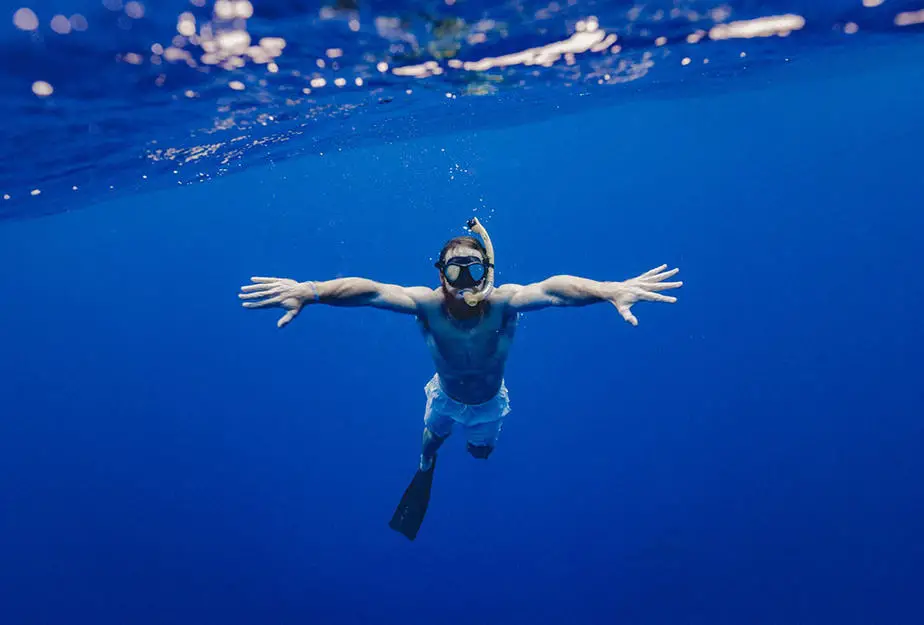
Mouthpiece
When selecting a snorkel, one important consideration is the mouthpiece. When snorkeling or freediving, you will spend a lot of time by the surface with the snorkel in your mouth compared to other water sports. Thus, it must be comfortable enough for you to use for many hours without feeling discomfort.
In order to ensure the mouthpiece is comfortable, first consider the material. You should look for mouthpieces made from soft silicone materials. In addition to being comfortably soft, it is also easy to clean and hypoallergenic. Mouthpieces are detachable to allow you to clean it more thoroughly.
Next, consider the size of the mouthpiece. You should not have to force your lips over the mouthpiece, nor bite down extremely hard in order for it to stay in place. You will know the mouthpiece is an appropriate size when your lips and jaw is relaxed and you do not feel pain, even when worn for a long time.
Lastly, the bite tabs in a snorkel mouthpiece should be soft as well. Some high-end snorkels have bite tabs that conform to the shape of your bite for greater comfort.
Size
When it comes to freediving snorkels, longer is not better. The snorkel should be as large and long as it needs to be and no more (the tube should be around a foot in length). This is because a bulky snorkel increases drag, and the longer the tube length, the more space there is for “dead air” to linger.
When breathing through a snorkel, the air in the tube must be cleared out each time you exhale. Otherwise, you will start inhaling some of the carbon dioxide (CO2) that didn’t get cleared out instead of a full breath of fresh oxygen.You will slowly asphyxiate if you breathe too much dead air in the tube. If you start to feel dizzy or lightheaded, surface immediately.
If your snorkel ever gets filled with water while you’re using it, you may accidentally choke on it and fresh oxygen won’t be able to enter. You must quickly clear all of the water out by forcefully exhaling in order to breathe through the tube again. However, the longer the tube, the more difficult this is to do.
Material
Snorkel tubes can be made from either soft or hard plastic. Higher end snorkels may incorporate both in their design.
Snorkels made from hard plastic are, unsurprisingly, durable and strong (and typically less expensive). Unfortunately, they are not very flexible. A rigid snorkel is not desirable because they are more likely to break as opposed to one that has some flexibility. It’s also common for hard plastic snorkels to catch on something and get stuck.
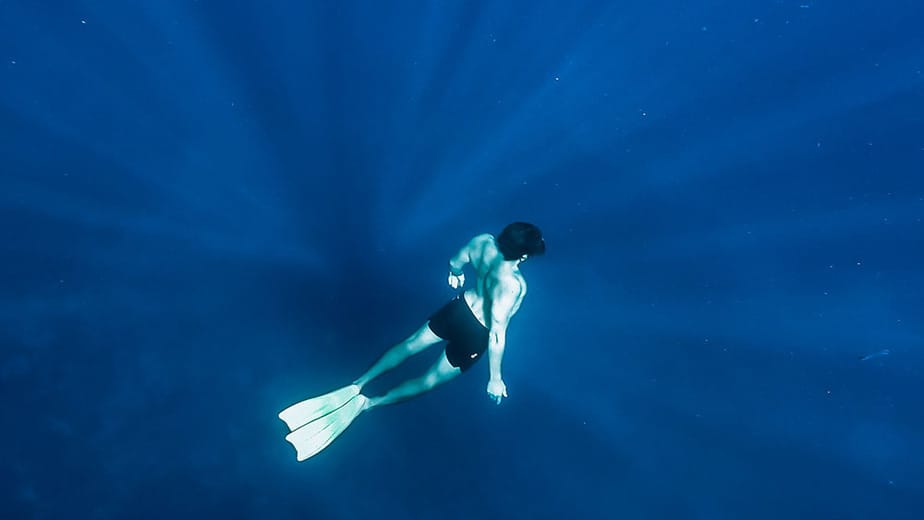
Flex Tube
A feature you will find on many snorkels is something called a flex tube. The flex tube is located near the bottom and it connects the main breathing tube to the mouthpiece (as opposed to one continuous tube).
The benefit of flex tubes is that when you’re by the surface and want to talk to your buddy, you can remove the mouthpiece and the flex tube will let it hang by your side out of your mouth’s way so that you can speak.
Unfortunately, freedivers and SCUBA divers do not benefit from this at all. When diving underwater, the flex tube will flap around, get in the way, increase drag, and will generally be a nuisance.
A foldable snorkel may be beneficial for SCUBA divers who may want to fold up their snorkel and store it in their BCD. Unfortunately, freedivers once again do not benefit from this, particularly those who prefer to leave their snorkel beneath their mask strap.
Mask Attachment
Snorkels must securely attach to the snorkel mask, and most snorkels come with either a plastic clip or a figure-eight style attachment. Mask clips can be either the quick-release type or the lift-to-attach type.
The figure-eight silicone keeper is ideal for snorkels with round tubes. Conversely, the mask clips are generally used for snorkels with oval or squarish tubes. The former is extremely cheap and easy to replace though it is slightly more of a hassle to attach it to your mask compared to the hard plastic clips.
Some freedivers leave their snorkels clipped to their masks and dive with the snorkel. However, some freedivers will leave their snorkel floating at the surface so they can dive unencumbered by it. To do this, you can either get a floating snorkel and ask a dive buddy to hold onto it for you, or attach the snorkel with a string to a freediving float.
Color
We don’t like to mention colors on a product unless they serve a practical purpose. In the case of freediving, colors do matter a bit. For instance, beginner freedivers may want to use a snorkel that is brightly colored.
A bright colored snorkel will stand out even from a distance. In case you are in trouble, it is very easy for help to spot you. You might want to stand out so that boats, snorkelers, or others in the water can see you and can avoid colliding into you.
If you plan on spearfishing, then you want a snorkel that is a dull, dark color, such as blue or black. This can allow you to blend into the water better and avoid detection from sea creatures. While fish can’t exactly see colors, they can still tell when there is a difference in contrast.
Casual snorkelers or freedivers can pick whatever color or style they prefer.
Snorkel Safety Tips
Snorkel in or out?
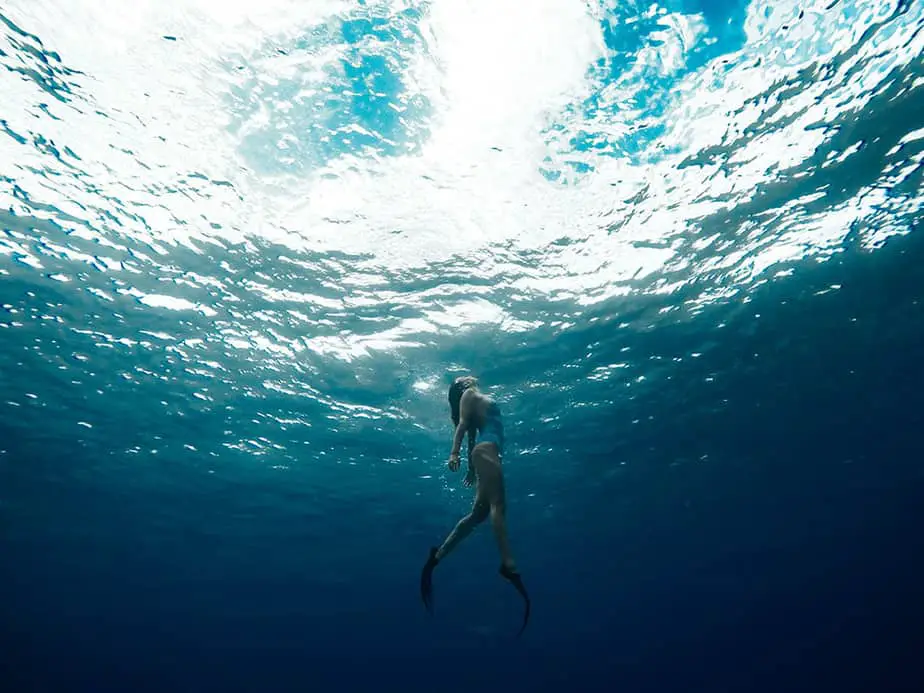
A simple way to spot a newbie freediver (perhaps someone who is transitioning from snorkeling to freediving) is to check if they have the snorkel in their mouth or not in the middle of a dive. Beginners will keep the snorkel in their mouth, but experienced freedivers know better than to do that.
It isn’t safe to dive with the snorkel in your mouth. Experienced divers know better than to do this because in the event of a shallow water blackout, your body will subconsciously clench your jaw, locking the snorkel in place and raising your chances of drowning.
Keep in mind that while submerged, a snorkel will essentially act like a funnel of water that will get poured straight into your lungs the second you blackout. You don’t want the first thing you do after surfacing to be frantically removing a snorkel from your mouth so you can breathe. Having to clear water out of the tube when you are already out of breath is even worse.
New freedivers will often make the mistake of keeping the snorkel in their mouth when freediving, so if you catch somebody doing this, make sure to let them know that it is unsafe to do.
With or Without A Snorkel?
Instead of asking whether the snorkel should be in or out of your mouth, how about whether you need a snorkel at all? For an in-depth answer, we recommend you read this article in its entirety. Otherwise, here is the summary.
Depending on how far you plan on diving, the type of diving you’re doing, as well as what depths you will reach, the answer may differ for each scenario.
For example, if you are spearfishing then you will most likely be within 80 feet of the surface. In this case, just dive down with your snorkel. Spearos need to be aware of their surroundings at the surface, so a snorkel is a necessity.
If you are freediving at medium depths then it is up to personal preference as well as the setup you have. For instance, if you have a freediving float that you can safely and securely tie your snorkel to, then you can use it by the surface and just leave it there when diving.
On very deep dives you are better served diving without a mask or snorkel. Any equipment will increase drag, and having a snorkel floating behind you can be distracting. When depth matters, you cannot afford to have anything holding you back, and a snorkel would simply get in the way.
Best Freediving Snorkel Recap
Modern snorkels come with many advanced features, many of which are unnecessary or even detrimental to a freediver. Snorkels with dry tops or flex tubes will actually get in the way of your dive. Ideally, the best freediving snorkel will be a traditional J-type snorkel that can be quickly and easily cleared.
When it comes to material. you want a snorkel that is made of soft plastic. Soft plastic is flexible and can withstand more motion. They are also more comfortable to wear. Hard plastic is prone to breaking, particularly if there is a strong wave or if it gets caught on something. You need to find a snorkel that is soft enough to bend, yet rigid enough to maintain its shape.
Lastly, keep in mind how you intend on using the snorkel. It’s not a good idea to dive underwater with a snorkel in your mouth. If you ever experience a shallow water blackout, the snorkel will funnel in water into your lungs and you will almost certainly drown.
Furthermore, you may not even want to have a snorkel hanging around when diving. Set up a freediving float that you can attach the snorkel to, or have a buddy around to grab your snorkel, and you are clear to freedive without worrying about where your snorkel is.
You may also be interested in checking out our other gear reviews:
- Freediving Buoy and Line Review
- Freediving Weight Belt Review
- Freediving Fins for Beginners Review
- Best Freediving Watch Review
Last update on 2024-03-21 / Affiliate links / Images from Amazon Product Advertising API

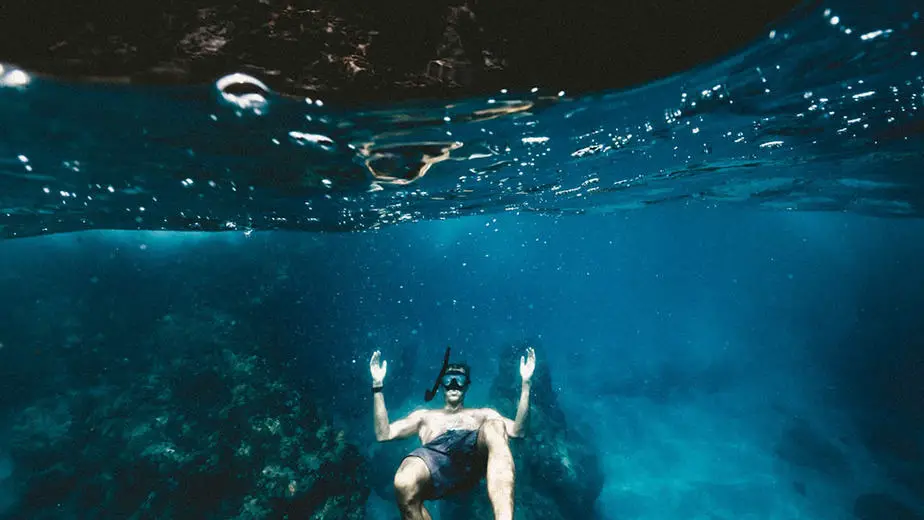
![Cressi Corsica, Black/Black [DUPLICATE]](https://m.media-amazon.com/images/I/31lYQRUOL5L.jpg)

